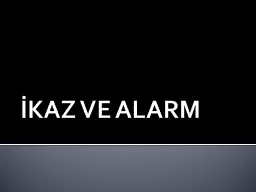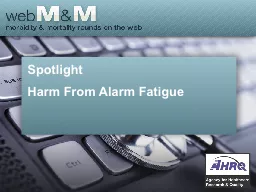PPT-Alarm Safety in the NICU
Author : olivia-moreira | Published Date : 2017-09-15
Purpose of Clinical Alarms Physiologic monitor alarms are intended to alert clinicians to potentially hazardous changes in a patients condition or if a device is
Presentation Embed Code
Download Presentation
Download Presentation The PPT/PDF document "Alarm Safety in the NICU" is the property of its rightful owner. Permission is granted to download and print the materials on this website for personal, non-commercial use only, and to display it on your personal computer provided you do not modify the materials and that you retain all copyright notices contained in the materials. By downloading content from our website, you accept the terms of this agreement.
Alarm Safety in the NICU: Transcript
Download Rules Of Document
"Alarm Safety in the NICU"The content belongs to its owner. You may download and print it for personal use, without modification, and keep all copyright notices. By downloading, you agree to these terms.
Related Documents














